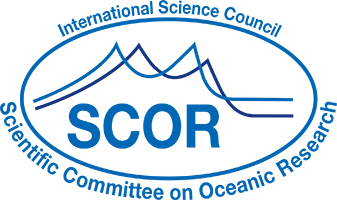On 11 February 2018, just prior to the Ocean Sciences Meeting in Portland, OR, USA, IOCCP and US NOAA held the kick-off meeting of the Surface Ocean CO2 Reference Observing Network (SOCONET). The meeting was attended by invited participants who represented the largest operators of surface water CO2 operations and/or activities relevant for network development. Establishment of the network responds to the need to provide the high-quality data to constrain global and regional air-sea CO2 fluxes on seasonal timescales, to determine trends and patterns in surface water CO2 levels, and to elucidate the factors influencing the patterns on daily to decadal time scales and to provide important element of an OA monitoring system.
The participants of the kick-off meeting decided that specific targets and metrics need to be developed to assess the efficacy of the network and its performance. The network participants will develop such network-wide set of targets and metrics, which will aid in network’s management and coordination. These targets and metrics will lead to deliverables that, to some extent, will mimic the successful ARGO network. They will include: real time transmission and dissemination of all data in the network, real-time tracking of assets, delayed mode quality controlled data including uncertainty estimates, and biannual releases of all data in the network in the form of collated data and maps. Participants of the network will confer at regular basis to discuss data products and publications resulting from the data obtained in the network.

From a network and consistent data delivery perspective, it is desirable to have a single operator and uniform instrumentation, or at least strong top-down control to implement an observing system. However, this is seldom feasible for global ocean networks since the ocean is the global commons with many different independent observers and stakeholders. To this end, the network kick-off meeting participants decided to develop a framework that will use existing platforms and operations with specific focus on:
- Well-quantified accuracy and precision of measurements following established recommendations
- Rapid and consistent data delivery including near real-time and delayed-mode data Inter-comparison and verification of different operations
- Recommendations on expansion of parameters that would be incorporated across the network
- Initial focus on entraining the major groups with successful programs into the network and working with current multi-institutional efforts such as the marine element of the pan-European Research Infrastructure: Integrated Carbon Observation System - Ocean Thematic Center (ICOS-OTC), NOAA SOOP-CO2 and mooring CO2
- Addressing data gaps
- Mutual aid in maintaining operations and advocacy for sustained resources
- Assessing evolving needs of operators and stakeholders
The development of this effort will rely heavily on implementation strategies, standard operating procedures and lessons learned of the smaller national and multi-national entities (e.g. ICOS-OTC in Europe, NOAA in the USA or NIES in Japan). In design and execution, it will look at protocols and procedures of other established networks such as ARGO, GO-SHIP, the CMDL Atmospheric CO2 network, and the Advanced Global Atmospheric Gases Experiment (AGAGE). At the same time, SOCONET is envisioned to become part of JCOMM-SOT (Ships Observation Team) and report to the JCOMM OCG (Observation Coordination Group). These are the relevant operational entities charged with implementing the Global Ocean Observing System (GOOS).
The data-based products from the network will be used for scientific analyses, development of indicators of the variability in ocean ecosystems, and allowing biogeochemical and socio-economic assessments. In particular, the products will be critical for determining the effects of OA on marine ecosystem health, and quantification of anthropogenic carbon uptake on variety of scales. Therefore, the successful development of SOCONET as a sustained global ocean observing network should be considered critical to execute the GOOS mandates in climate and marine ecosystem health.





 Please wait...
Please wait...